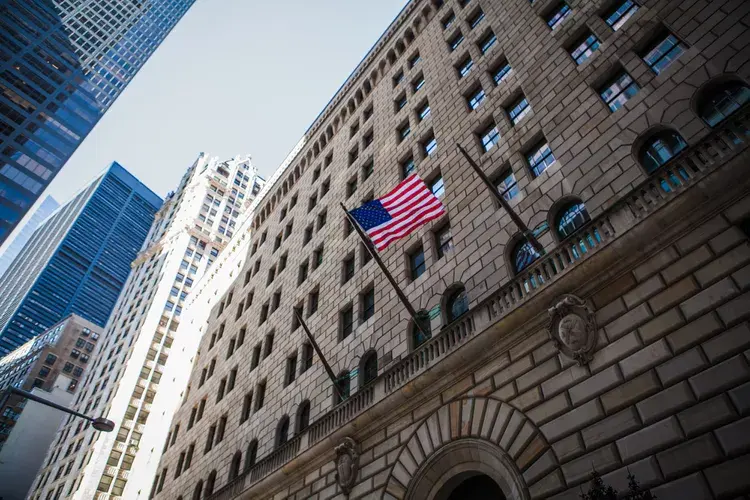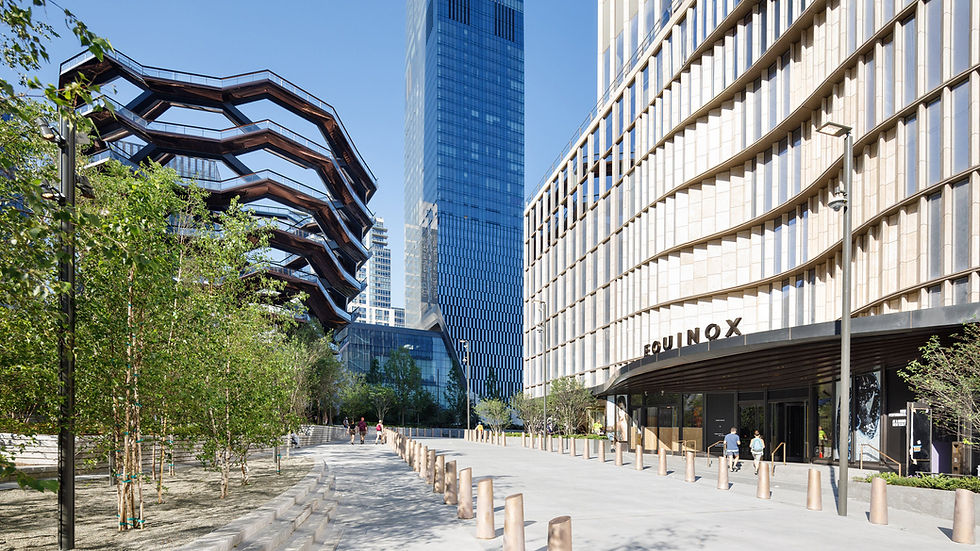Weekly Market Report - June 5, 2023
- Norman Bobrow

- Jun 4, 2023
- 6 min read
***
About half of large multinationals are planning to cut office space in the next three years as they adapt to the rise of homeworking since the coronavirus pandemic. A Knight Frank survey of executives in charge of real estate at 350 companies around the world that together employ 10mn people found that, among major groups cutting their footprint, the largest number was aiming to reduce space by 10 to 20 per cent. Please use the sharing tools found via the share button at the top or side of articles. The prospect of big companies making further cuts to office space has prompted worries about the future of older buildings and unpopular locations, as the commercial property market negotiates a painful downturn prompted by higher interest rates. Nearly half of the companies surveyed are also planning to change their headquarters in the next three years. However, a majority of smaller companies are planning to expand their office space.
Elliot said many companies had paused real estate decisions in the past three years, waiting to assess post-pandemic working habits. Many would still have to wait for their leases to expire before making changes, he added.
Companies are taking different approaches to working from home. BlackRock, the investment manager, last month ordered all employees back to the office four days a week, following JPMorgan’s decision in April to ask senior staff to work in person full time. Roughly a third of companies have opted for fully or mostly in-person work, according to the Knight Frank research, which covered companies worldwide in industries ranging from tech to financial services. The majority, or 56 percent, of companies have settled on a hybrid policy, while about 10 percent plan to be mostly or entirely remote. Following a round of lay-offs, ride-sharing group Lyft in April reversed a policy to allow fully remote working and told employees to come back to the office part-time later this year. In London, companies agreed a record number of office moves last year but took less space than the pre-Covid average.
Residential neighborhoods in the country’s largest hubs are experiencing a significant boost from residents returning as traditional office areas continue to languish. New data from a variety of sources shows how hybrid and remote work, a shift some predicted could kill cities, is transforming them instead. While office leasing has slowed significantly in New York, residential rents in Greenwich Village were 30% higher than they were during the same time in 2019, per data from Douglas Elliman. Similarly, Placer.ai data shows Downtown Los Angeles is seeing 30% less foot traffic than before the pandemic, but in the residential areas of South Glendale and Highland Park, foot traffic is nearly fully recovered. In Chicago, the central business district accounted for more than 80% of corporate lunch orders in 2019, according to delivery app Grubhub, but so far this year it represents 60%. In the worst of the crisis, people left cities in droves. In New York, the housing vacancy rate soared as leases plummeted in 2020. Vacancy is now at 2.5%, per Douglas Elliman data, while the availability rate in the office market in Manhattan is over 17%. The issues surrounding office remain challenging for big cities that have depended on high property valuations for tax revenue.
***
Thousands of employees will be able to work remotely two days a week beginning this month. It’s a major concession from Adams, a hard-line opponent of remote work, in a concerning time for office landlords. The shift, a response to staff shortages, is expected to affect at least 30 agencies for the next two years. The Department of Housing Preservation and Development will be among the first to get a crack at the option. Adams has said remote work is a threat to the city’s central business districts, where retail leasing has struggled compared to corridors closer to residential areas. The mayor last year called out bankers who flaunted Covid protocols to enjoy the city’s culture on the weekend, only to avoid the office during the week. Adams said last summer the city should look to define the question of “what does the work week look like” and aim to “build local ecosystems in our community” as New Yorkers’ work arrangements shape the city.
City employees were called back to the office in September 2021, sparking criticism when surges from coronavirus variants took hold. Calls for private businesses to follow suit were met with mixed reactions from major companies, though, who didn’t want to alienate employees. City Hall started softening its stance on hybrid work amid negotiations with union workers, which ended in an agreement with the city’s largest municipal union at the end of March. While the hybrid plan is only scheduled for two years, the chance it’s extended beyond that point can’t be discounted. Fewer in-person workers will bring more problems to central business district retailers and office landlords, who could see the values of their buildings fall by 44 percent due to work-from-home patterns. The city may benefit, however, as the city looks to fill posts that failed to draw interest when the specter of going into the office every day was presented. Seven agencies had vacancy rates of at least 20 percent, according to a March analysis from Comptroller Brad Lander.
***
Some of New York’s best known real-estate developers are unloading their least viable office buildings at deep discounts, cracking open a sales market that had all but closed in the first quarter. RXR defaulted on the $240 million loan on its 33-story office tower in lower Manhattan. The developer, which owns and manages dozens of commercial and residential properties in the New York City area, has said that it will turn over ownership of the office tower at 61 Broadway to whoever buys the defaulted debt. Giant investment firm Blackstone also recently sold a 49% stake in One Liberty Plaza valuing the tower at $1 billion, down from the $1.5 billion valuation when Blackstone bought the stake in 2017.
These cut-rate sales and sales efforts attest to the troubled state of the office market, which is suffering one of its worst downturns since World War II because of the weak return-to-office and high interest rates. Still, the activity offers a bit of relief for the market. Until now, market upheaval has frozen sales activity, making it very difficult for owners, lenders, appraisers and others to determine how far office building values have fallen. Deeply discounted sales reflect the emergence of a two-tiered office market. One tier includes the highest quality space with amenities such as rooftop decks, extensive food offerings and stellar views. These properties can still attract top rents from tenants who are looking for ways to reward employees for returning to the office. But there is still a glut of run-of-the-mill space that requires a big capital investment by landlords for upgrades necessary to attract tenants.
Landlords who own both types of buildings are getting rid of the weaker properties to focus on the ones that can still be profitable. For example, Silverstein decided to sell its property at 529 Fifth Ave., a 65-year-old tower that it has owned since 1978, partly because its largest tenant, accounting firm Citrin Cooperman, decided to vacate. Silverstein instead is focusing on its trophy properties, like its space in the World Trade Center, which is 95% occupied. The office-building sales pipeline in New York is beginning to grow, market participants said. One of the next big deals will likely be the Federal Deposit Insurance Corp.’s sale of the $60 billion portfolio of commercial property assets that had been owned by the failed Signature Bank.
***
Eroding demand for office space and high interest rates sent CMBS delinquency way up last month. The overall CMBS delinquency rate grew by 53 basis points, mostly because the office delinquency rate soared 125 basis points to 4.02 percent. One year ago only 1.63 percent of office CMBS loans were delinquent. Now the rate is virtually the same as hotel CMBS delinquency, which has been improving as the travel industry recovers. The monthly increase in the overall CMBS delinquency rate was the largest since June 2020. The rate stands 48 basis points higher than its 3.14 percent mark one year ago. Just six months ago, it was 2.99 percent. The culprit was clear. Legacy loans weren’t the problem this time, unless one considers all pre-Covid lending to meet that description.
Many commercial loans coming due now were issued when interest rates were substantially lower, so refinancing is challenging for properties where rent revenue is flat or down. The retail delinquency rate grew the second most of any asset class, rising 56 basis points to 6.67 percent, but is up only 10 basis points from its level of one year ago. The lodging delinquency rate was virtually unchanged at 4.25 percent; its 12-month peak, reached last June, was 5.94 percent. The two delinquency rates that fell, according to Trepp, were industrial and multifamily. They dipped 1 basis point (to a miniscule 0.39 percent) and 36 basis points (to 1.46 percent), respectively.









Comments